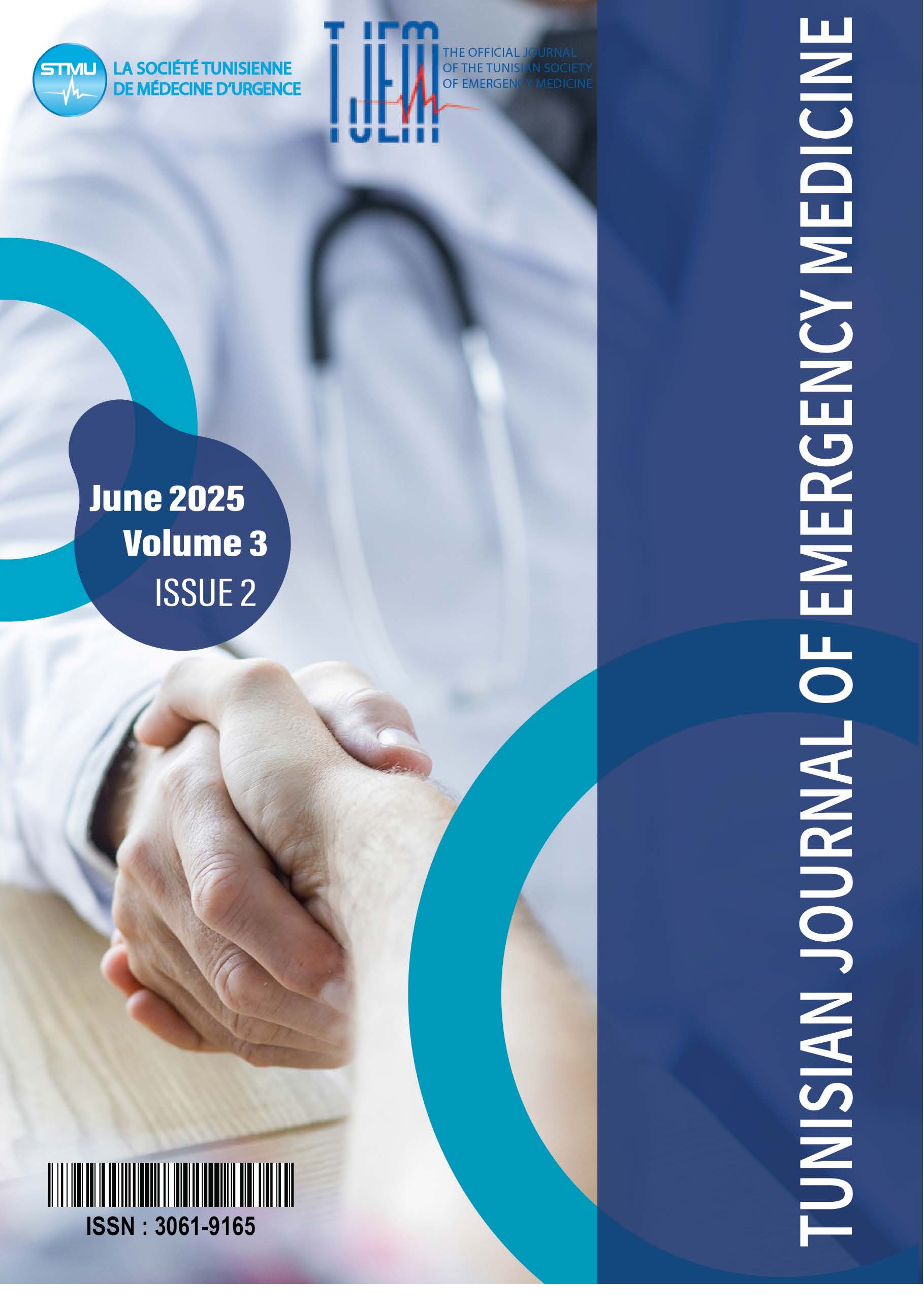Emphysematous pyelonephritis with infected abdominal aorta pseudoaneurysm among a diabetic man
DOI:
https://doi.org/10.0000/jet9jt34Keywords:
Emphysematous pyelonephritis, Pseudoaneurysm, Aorta , Diabetes mellitusAbstract
Background : Emphysematous pyelonephritis (EPN) is an acute necrotizing infection of the kidney that generates gas within the renal parenchyma/collecting system or perinephric. It requires aggressive medical and often surgical management. To our knowledge, its association with an infected abdominal aorta pseudoaneurysm has until now never been documented. We report the case of a diabetic patient with concomitant infected abdominal aortic pseudoaneurysm with EPN.
Case Report : A 63-year-old man with a history of uncontrolled diabetes mellitus type 2 has presented with a fever, abdominal pain, dysuria and malaise. Physical examination revealed signs of moderate shock. Ultrasound showed absence of left kidney which is replaced by a structure containing several echogenic foci mimicking left colic flexure and a normal-sized right kidney. An urgent computed tomography (CT) scan revealed the presence of air as of the scout CT image, then confirmed during the CT scan by demonstrating intraparenchymal, perinephric, and pararenal air, consistent with EPN. In addition, it showed the presence of voluminous pseudoaneurysm arising from the left lateral wall of the abdominal aorta, with alteration of left renal artery. Emergent nephrectomy and open repair of the large pseudo-aneurysm were strongly considered. In the operating room, as of initiating anesthesia a cardiopulmonary arrest has occurred. In spite of the resuscitation, the patient passed away.
Conclusion :
Our case highlights a rare and fatal association between EPN and an infected abdominal aortic pseudoaneurysm. Early recognition and prompt imaging are essential in diabetic patients presenting with signs of sepsis and abdominal symptoms. The coexistence of these two severe infections presents significant diagnostic and therapeutic challenges, emphasizing the need for rapid multidisciplinary intervention to improve outcomes.
Downloads
Published
Issue
Section
License
Copyright (c) 2025 Tunisian Journal of Emergency Medicine

This work is licensed under a Creative Commons Attribution-NonCommercial-ShareAlike 4.0 International License.
How to Cite
Similar Articles
- Asma ZORGATI, Short and long-term outcomes of patients presenting with Acute Coronary Syndrome without ST-segment elevation (NSTE -ACS): findings from a Tunisian Register: the ReSCUS Register , Tunisian Journal of Emergency Medicine: Vol. 2 No. 2 (2022): TJEM Vol2 Issue2
- Rabeb Mbarek, Khouloud Hamdi, Sarra Soua, Hela Abroug, Sondes laajimi, haifa Bradai, Dorra Loghmari , Asma SRIHA, Semir Nouira, Prehospital Particularities of Covid-19 infection and factors associated with its severity during the omicron variant wave (East-center of Tunisia) , Tunisian Journal of Emergency Medicine: Vol. 2 No. 4 (2024): TJEM Vol2 Issue4
- Sirine Bouzid, Rim Karray, Amine Abdelhedi, Fadhila Issaoui, Olfa Chakroun, Noureddine Rekik, MULTIVISCERAL DAMAGE FOLLOWING ACUTE METHOTREXATE INTOXICATION BY DOSING ERROR , Tunisian Journal of Emergency Medicine: Vol. 3 No. 1 (2025): TJEM 2025: Vol.3 Issue 1
- imen REJEB, Spontaneous Pneumomediastinum as UncommonComplications of COVID-19 Pneumonia: 2 casereports and review of literature , Tunisian Journal of Emergency Medicine: Vol. 2 No. 4 (2024): TJEM Vol2 Issue4
- Cyrine KOURAICHI, Value of inferior vena cava diameter respiratory change as a marker of heart failure in COPD exacerbation , Tunisian Journal of Emergency Medicine: Vol. 2 No. 2 (2022): TJEM Vol2 Issue2
You may also start an advanced similarity search for this article.
Most read articles by the same author(s)
- Wiem Feki, Fatma Hammami, Amina Kammoun, Makram Koubaa, Zaineb Mnif, Vascular causes of pediatric acute ischemic stroke: the crucial role of imaging , Tunisian Journal of Emergency Medicine: Vol. 3 No. 2 (2025): TJEM 2025: Vol.3 Issue 2

